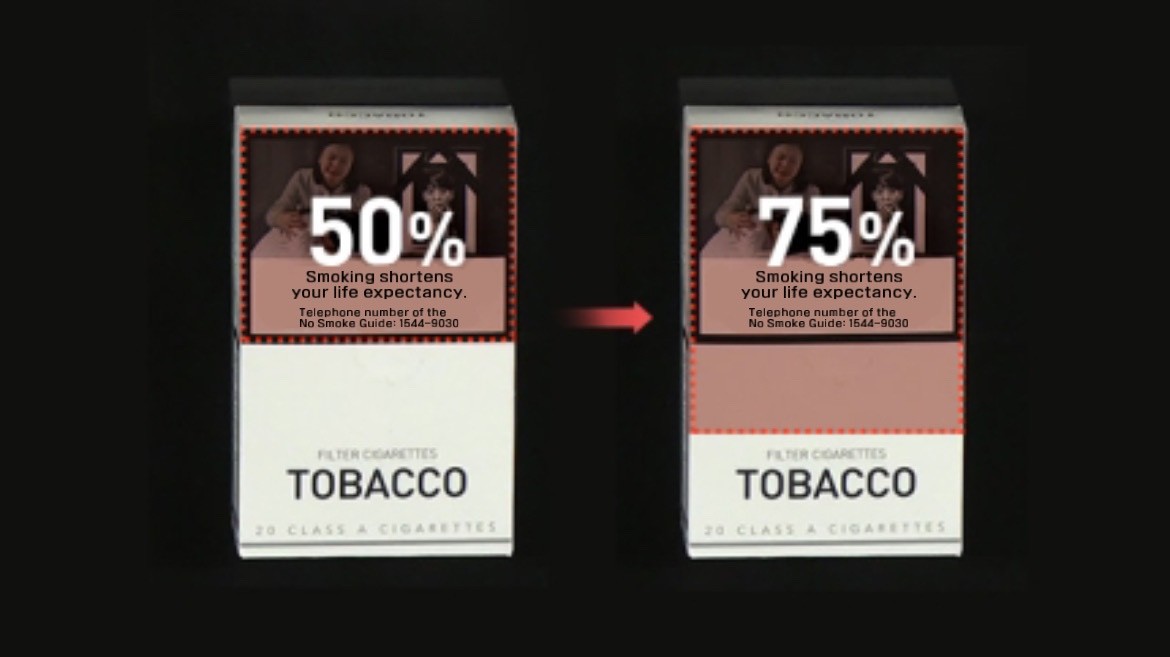All cigarette packs manufactured in South Korea are covered in images of people suffering from diseases caused by smoking, front and back. These warning messages are representative of smoking cessation policies recommended by the World Health Organization to specifically convey the harmfulness of smoking to its consumers. On June 22, Korea’s Ministry of Health and Welfare announced changes to the contents of cigarette packs, including graphic warning labels, and distributed the guidelines to the Korea Health Promotion Institute. The stronger labels will be embedded in earnest from December 23. The public's response has been divided, but I agree with the stronger graphic warning labels representation.
 |
| ▲ Committee members discussed about changing the graphic warning labels on cigarette packs on June 20. (Photo from Ministry of Health and Welfare) |
Graphic warning labels are the most effective way to inform consumers of the dangers of smoking. Many study results prove that between image and text warnings on cigarette packs, images have a greater effect. According to 'Graphic Warning Labels in Cigarette Advertisements' published in the American Journal of Preventive Medicine, most of the 200 smokers surveyed remembered the health risks when graphic warning labels were embedded, but only half of them did when they encountered text-only warning labels. The result signifies that images are more suitable than text as visual materials make a stronger impression in a short time, and smokers tend to look at images longer. In addition, graphic labels affect the emotional response of smokers and change their behavior. In 'The Effects of Graphic Health Warnings on Cigarette Packaging on Smokers' Quitting Smoking: A Longitudinal Study', published in the Korea Advertising Society, smokers were heavily affected by graphic labels as they increased negative emotions such as regret and anxiety, unlike cognitive reactions such as prior knowledge. Since encountering the labels, a significant number of smokers tried to quit smoking. These study results denote that the graphic warning labels on cigarette packs are a more effective means of bringing about positive change.
The strengthening of graphic labels can also reduce the temptation for minors to smoke. According to 'The 13th Korea Youth Risk Behavior Web-Based Survey' conducted by the Korea Disease Control and Prevention Agency, 70 percent of students were aware of the graphic warning labels on cigarettes, and 80 percent of those were able to recognize health risks that motivate smoking cessation. Health risk cognizance and smoking prevention effects because of graphic warning labels were higher for both non-smokers and adolescents with experience in smoking cessation education. Half of the teenagers who smoked were made aware of the health risks, and 1 in 3 of them said they were motivated to quit smoking. This is a noteworthy result as adolescents are not safe from the temptation of cigarettes. In 2021, 'The 17th Korea Youth Risk Behavior Survey' showed that the average age for a person’s first smoking experience was 13.5 years old. This combined with the ease of purchasing cigarettes and the constant exposure to cigarette advertising puts a lot of pressure on teens to resist taking up the habit. As a result, for several years, the average age has been hovering around 13.
Those who have a negative stance towards cigarette package warnings claim they disturb their right to make a personal choice and that they affect them mentally. For them, making it difficult to purchase cigarettes by raising the price would be a more effective means of inducing smoking cessation. Contrary to that claim, however, a research report published by the Korea Institute of Public Finance in 2021 reported that a decline in cigarette demand due to rising prices could not be proven. The current price of a pack of cigarettes is 4,500 won (about 3 dollars) which rose more than half from 2,500 won (about 2 dollars) in 2008, but the purchase frequency only fell briefly after the price hike and did not show any continued decline in the long run. Other figures also showed unexpected results. The adult smoking rate is made up of persons who identify as smokers and smoked more than five packs of cigarettes in their lifetime. This rate in 2015, the year that cigarette prices rose, was 22.6 percent, down 6.6 percent from the previous year. The price increase took effect at the beginning of the year and was expected to have a significant effect on the fall in the smoking rate. However, it rose unexpectedly by 5.8 percent to 23.9 percent in 2016. This means that it is not easy to maintain the downward trend in rates of smoking despite a drastic price increase, and in fact, the annual smoking rate showed a slight increase after the price hike was announced. This is because the imminent price increases provoked panic buying, where citizens purchased abnormal amounts of cigarettes before the policy took effect. The Ministry of Economy and Finance anticipated this outcome and temporarily implemented a limit on the number of cigarettes consumers could purchase. However, even this effort was thwarted by smokers who imported cigarettes from abroad by taking advantage of duty-free products. As such, price increases are an ineffective means of inducing smoking cessation. Instead, the government should focus on implementing stronger graphic warning labels because of their significant proven effect on inducing smoking cessation.
 |
| ▲ Graphic Warning Labels with Enlarged Area in the Past (Photo from KBS) |
I strongly agree with the tougher representation of graphic warning labels embedded in cigarette packages. Since December 2016, Korea has adopted warnings in earnest and has undergone several revisions every two years, such as enlarging the size of graphic warning labels or portraying them more intensely. Consequently, Korea’s smoking rate decreased. Even if the graphic warning labels lead to psychological pressure or anxiety, it is an unavoidable choice for countries promoting the public interest. Smoking harms smokers as well as non-smokers, and the enlargement of the graphic warning labels that helps users quit smoking will have a greater positive effect on our society and should be supported.
김주연 dankookherald@gmail.com






